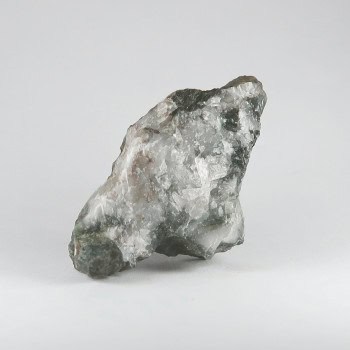Ludwigite
Ludwigite is an uncommon borate mineral, probably best known as an inclusion in Peridot – but it also occurs on its own!
Showing the single result
Information about Ludwigite
Ludwigite is a dark gray to black mineral with a metallic to submetallic luster. It often occurs in fibrous or massive habits and can sometimes display prismatic crystal forms.
The mineral is opaque and has a strikingly dense appearance. It is commonly associated with other borate and iron-bearing minerals and is frequently found in skarns, metamorphic rocks, or iron-rich deposits.
Uses and History
Ludwigite has limited direct industrial applications but can serve as a minor ore of boron and iron.
It is also studied for its geological significance in high-temperature and high-pressure environments, offering insights into skarn formation and boron geochemistry. Mineral collectors value well-formed specimens for their rarity and unique fibrous textures.
Ludwigite was first described in 1874 and named after Ernst Ludwig, a German chemist who contributed significantly to the study of minerals and chemistry. Its type locality is in Ocna de Fier, Romania, but it has since been identified in skarn deposits and boron-rich environments worldwide, including Italy, China, and the United States.
Mineralogy
Typically black, sometimes very dark green.
Hazards and Warnings
Mineral collectors should wash their hands after handling specimens, to avoid any exposure to potential toxins.
Almost all rocks, minerals (and, frankly, almost all other substances on earth) can produce toxic dust when cutting, which can cause serious respiratory conditions including silicosis. When cutting or polishing rocks, minerals, shells, etc, all work should be done wet to minimise the dust, and a suitable respirator or extraction system should be used.
Translations
Arabic:
Hindi:
Portuguese:
Bengali:
Indonesian:
Punjabi:
English:
Italian:
Russian:
- Людвигит
French:
Japanese:
Spanish:
- Ludwigita
German:
- Ludwigit
Korean:
Thai:
Gujurati:
Mandarin Chinese:
- 硼鎂鐵礦
Urdu:

